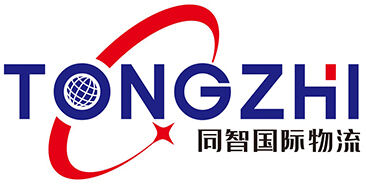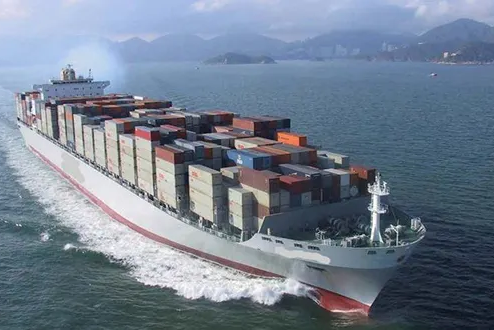شحن الحاويات هو العمود الفقري للتجارة العالمية ، مما يتيح حركة فعالة وآمنة للبضائع في جميع أنحاء العالم. مع الطلب المتزايد باستمرار على التجارة الدولية ، يجب على الشركات فهم الفروق الدقيقة في شحن الحاويات لتحسين عملياتها اللوجستية. تستكشف هذه المقالة أفضل الممارسات والاعتبارات الرئيسية لتحقيق أقصى قدر من الكفاءة في شحن الحاويات.
فهم شحن الحاويات
Container shipping involves transporting goods in large, standardized containers. These containers come in various sizes, with the most common being the 20-foot and 40-foot containers. The standardization allows for seamless transfer between ships, trucks, and trains, making it a versatile and efficient mode of transport.
الفوائد الرئيسية لشحن الحاويات
Efficiency: Containers are designed for easy handling and stacking, which speeds up the loading and unloading process at ports. This efficiency translates to faster transit times and reduced costs.
الأمن: البضائع المنقولة في حاويات أقل عرضة للتلف والسرقة. يوفر البناء القوي للحاويات حماية ممتازة ضد العناصر والاختلاس المحتمل.
الفعالية من حيث التكلفة: يعتبر شحن الحاويات بشكل عام أكثر فعالية من حيث التكلفة من وسائل النقل الأخرى ، خاصة بالنسبة للشحنات الدولية لمسافات طويلة. القدرة على دمج شحنات متعددة في حاوية واحدة تقلل من التكاليف.
التنوع: يمكن أن تحمل الحاويات مجموعة متنوعة من البضائع ، من المواد الخام والآلات إلى العناصر القابلة للتلف والمنتجات النهائية. تلبي الحاويات المتخصصة ، مثل الوحدات المبردة (المبردات) ، احتياجات محددة مثل التحكم في درجة الحرارة.
أفضل الممارسات لشحن الحاويات
Choose the Right Container Type
Selecting the appropriate container type is crucial for ensuring the safe and efficient transport of goods. Standard dry containers are suitable for most types of cargo, but businesses should consider specialized containers for specific needs:
الحاويات المبردة (المبردات): للبضائع القابلة للتلف التي تتطلب التحكم في درجة الحرارة.
Open-Top Containers: For oversized cargo that cannot fit into a standard container.
Flat Rack Containers: For heavy and bulky items like machinery and vehicles.
Optimize Container Utilization
Maximizing the use of available space within a container can significantly reduce shipping costs. Businesses should:
تعبئة البضائع وتكديسها بشكل صحيح: تأكد من تعبئة البضائع بإحكام وأمان لمنع التحول أثناء النقل.
Use Pallets and Skids: Facilitate easy handling and efficient use of space.
Balance Weight Distribution: Evenly distribute weight to maintain stability and prevent damage.
Implement Advanced Tracking Systems
Real-time tracking and monitoring of shipments provide valuable insights and enhance visibility throughout the shipping process. Advanced tracking systems offer:
تحديثات الموقع في الوقت الفعلي: إبقاء الأنشطة التجارية على اطلاع بموقع شحناتها وحالتها.
Condition Monitoring: Ensure that temperature-sensitive goods remain within the required range.
Predictive Analytics: Anticipate potential delays and optimize routes for faster delivery.
Ensure Compliance with Regulations
Compliance with international shipping regulations is essential to avoid delays and penalties. Businesses should:
ابق على اطلاع باللوائح التجارية: ابق على اطلاع دائم بقوانين الاستيراد / التصدير والمتطلبات الجمركية لكل وجهة.
Prepare Accurate Documentation: Ensure all necessary documents, such as bills of lading, certificates of origin, and customs declarations, are correctly filled out and submitted on time.
Work with Experienced Customs Brokers: Facilitate smooth customs clearance and minimize the risk of compliance issues.
Leverage Technology for Enhanced Efficiency
Technology plays a critical role in optimizing container shipping operations. Businesses should adopt:
برنامج إدارة الشحن: تبسيط عمليات الحجز والتوثيق والتتبع.
Automated Cargo Handling Systems: Speed up loading and unloading operations at ports.
Blockchain Technology: Enhance transparency and security in the supply chain by providing an immutable record of transactions and movements.
Key Considerations for Container Shipping
Cost Management
Shipping costs can significantly impact a business's bottom line. Key strategies for managing costs include:
دمج الشحنات: دمج شحنات متعددة في حاوية واحدة للاستفادة من وفورات الحجم.
Negotiating Contracts: Secure favorable rates and terms with shipping lines and freight forwarders.
Optimizing Routes: Select the most efficient and cost-effective routes to minimize transit times and reduce fuel consumption.
Risk Management
Managing risks associated with container shipping is essential to ensure the safe and timely delivery of goods. Consider the following:
التغطية التأمينية: الحماية من الإمكانات
الخسائر الناجمة عن التلف أو السرقة أو التأخير.
Contingency Planning: Develop plans to address unexpected disruptions, such as port strikes or natural disasters.
Regular Audits: Conduct audits of shipping processes and partners to identify and mitigate risks.
Sustainability Practices
Sustainability is becoming increasingly important in global logistics. Businesses can adopt eco-friendly practices such as:
استخدام السفن الموفرة للوقود: اختر خطوط الشحن التي تستخدم السفن الحديثة الموفرة للوقود لتقليل انبعاثات الكربون.
Implementing Green Packaging Solutions: Use recyclable and biodegradable packaging materials to minimize environmental impact.
Offsetting Carbon Emissions: Participate in carbon offset programs to neutralize the environmental footprint of shipping activities.
Conclusion
Container shipping is a vital component of international trade, offering efficiency, security, and cost-effectiveness. By implementing best practices such as selecting the right container type, optimizing container utilization, leveraging advanced tracking systems, ensuring regulatory compliance, and embracing technology, businesses can maximize the benefits of container shipping. Additionally, managing costs, mitigating risks, and adopting sustainability practices are crucial for maintaining a competitive edge in the global market.







